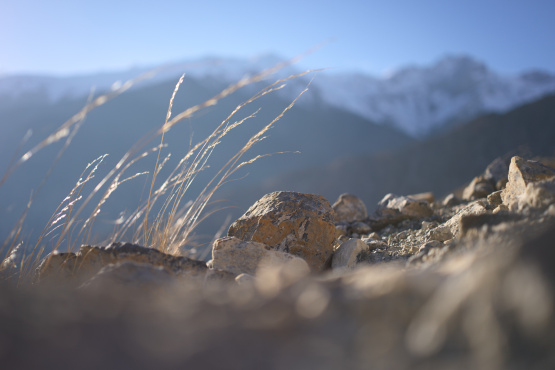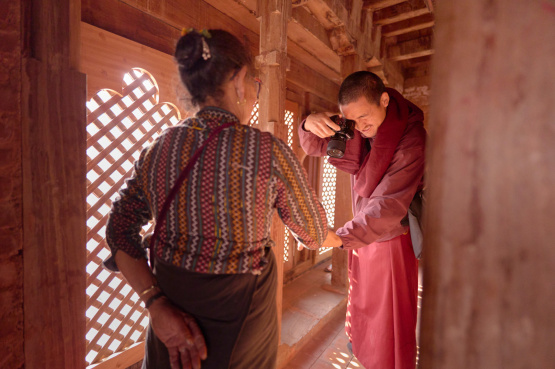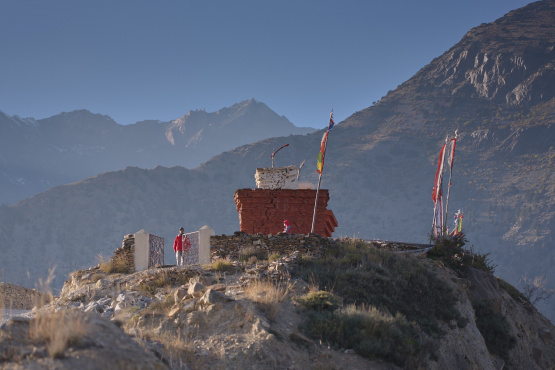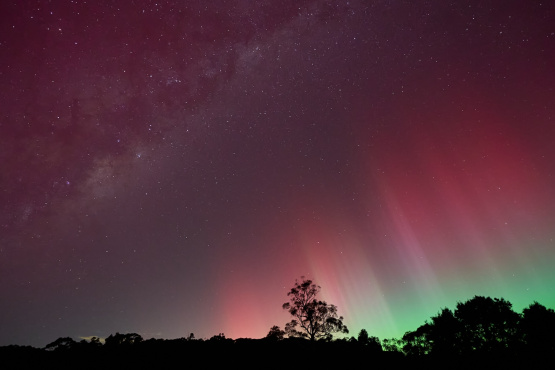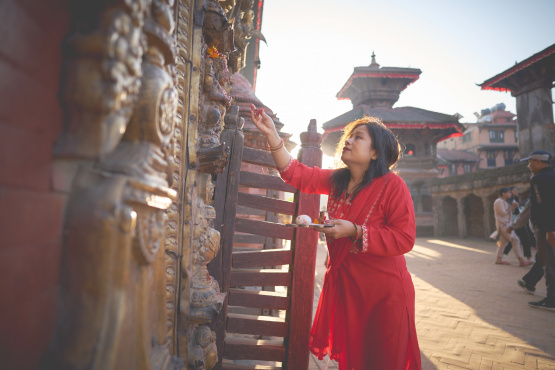Guizhou is one of the poorest provinces in China, a land that embraces ethnic people who once fled the change of Dynastic rule. Over the last few thousand years it has become a sanctuary for people who had no where else to go. Guizhou province and neighbouring Yunnan have the highest number of ethnic minorities anywhere in China.
Travelling by road across a 700km stretch of Eastern Guizhou you can encounter a dozen ethnic groups without leaving the highway. Departing from the capital of Guiyang and the Han villages around it you head towards the Shui, Dong, Geijia, Miao, Mini-Skirt Miao, Hong Yao and Zhuang.
There's a reason the dispossessed peoples of China fled to Guizhou, because nobody else wanted to live there. Eastern Guizhou is especially difficult terrain, a network of steep mountains and low rain. Mudslides are a seasonal event that washes roads into the rivers and frequently isolates villages.
Rice is the life blood for these people, grown on precipitously steep terraces. It's amazing that they grow rice at all here, but indeed they excel at it. Rice provides more than food as the excess is used to make "Bai Jiu", the local version of rice wine.
Once a year that excess is taken to the extreme during the May Week celebrations. Entire villages drink a months worth of Bai Jiu in a single day in celebrations that welcome the arrival of summer. The tradition is centred on giving rather than receiving, with generous servings of freshly killed pork served along giant tables in addition to the alcoholic offerings.
Sweet old ladies wander the streets with a kettle in one hand and a bowl in the other. They're not serving tea, the kettle is brimming with Bai Jiu and they pour some into the bowl and tip in down your mouth. When presented with an offering you have a split second to decide if you will drink it wear it. Naturally I pride myself on being a gracious guest.
I entered one town of Miao people and at first could not find a soul, the town was empty as I walked the cobbled lanes. As I moved deeper into the town I could hear a noise in the distance like a rumble of voices. When I reached the town square it looked as though every resident of the village was in attendance, stumbling in circles or sitting around with red faces and huge smiles.
There was a very old couple sitting on little stools and I said hello in my broken Mandarin. Like many of the elder generations of ethnic minorities this couple didn't speak any Chinese, only their native tongue. Their neighbour stepped in and told me that he was 101 years old, that the Bai Jiu made him strong.
The rules of the celebrations are simple, you never pour your own drink. I watched an old woman help her grandchild tip the kettle into a bowl, and then hold his hands to the sides while she necked it. That seemed to be cheating just a little bit.
Weddings and festivals are when you see the finest robes of the ethnic minorities. Young girls spend a decade making their own festival gowns, sewing detail into them by hand and collecting silver to adorn their head-dress. When they come of age the gowns feature in celebrations, and collectively they are spectacular.
In a little village almost hidden by bamboo a subset of the Miao people are called the Mini-Skirt Miao, named after their short dress worn during festivals. The town square was barely bigger than a coffee shop, but that was enough room for serious dance moves. Dozens of women rehearsed their choreography while we watched, with a few men banging drums and shouting orders.
The rehearsals were more enjoyable than the show for me, because you see the cheeky smiles of the women and the uncontrolled laughter that erupts when someone slips a step. These are joyous events for each village and are rooted in a tradition that has nothing to do with tourist coaches or camera happy travellers.
Dancing at the festivals is a massive expression of unity for the villages and a chance to celebrate the beauty of their people. For photographers it's an intense assault of inspiration in every direction. You fill your memory cards faster than an African wildlife safari.
I've been lucky enough to visit Guizhou twice on photographic adventures, and the last visit something truly special happened. In the midst of the May Week celebration we found ourselves caught up in a wedding. Guests from far away are a special omen for weddings in Guizhou and we were dragged along with the entourage like a bunch of lucky rabbits feet.
Crammed into a tiny timber house we sat on the floor with a room filled with family and friends while our host offered pork, fish, rice and chillies. You wouldn't call the scene lavish, more chaotic and definitely generous. There was enough food for the entire township. Once seated the Bai Jiu began to flow, and we were trapped.
It took hours to extricate ourselves from the party, and we stumbled back down the laneway towards town and the other festivities. Back on main street I nearly stumbled over a nice old lady, who it turns out I had met before. Two years earlier I had visited the same town and photographed her smiling face at a morning noodle stall.
In my backpack I had a copy of that photo to give her. She was so happy I thought she'd fall over, and perhaps it was the Bai Jiu but I got a little misty about it myself.
I always print off a set of images when I return to a city so I can share my portraits. I don't like the practice of paying money for a photo, because it devalues the moment and misses the point anyway. Photography is about more than a few pennies, it's about real experiences. If you're photographing a 10 Yuan moment than I think that won't make for such a great portrait. If you're photographing a lovely soul who inspires your spirit then the magic will come through.
Instead of giving money I like to give photos. It's a tall ask some times and once you return home the task of posting off photos is hard to prioritise. When I'm fortunate enough to return to a village, however, I like to come prepared with a stash of 6x4 portraits to give back to the locals. Giving back a photograph means far more to the people in them than any amount of Yuan or Dollars.
My most treasured portraits from Guizhou are not even the festivals, it's the real moments of life when ethnic people are planting rice, eating a bowl of rice or pounding their purple cloth. The Dong people have retained their traditional clothing in spite of the influx of cheaper and warmer machine made textiles. They grow the cotton in terraced fields, drag their threads down the street on narrow looms, dye the cloth purple and pound the finished product to create a semi-metallic sheen.
The ritual of the cloth is fascinating enough to fill a book, and the people of remote Dong villages still wear their fine purple cloth every day. The festivals are lovely, but the daily reality of people in Guizhou can be even more photogenic.
See the photo essay on Dong People in Guizhou:
http://ewenbell.com/editorial/People+of+the+Drum
See the photo essay on Miao people in Guizhou:
http://ewenbell.com/editorial/Portraits+of+Xijiang

Keep Reading
Join Ewen's newsletter for monthly updates on new photography articles and tour offers...Subscribe Here



